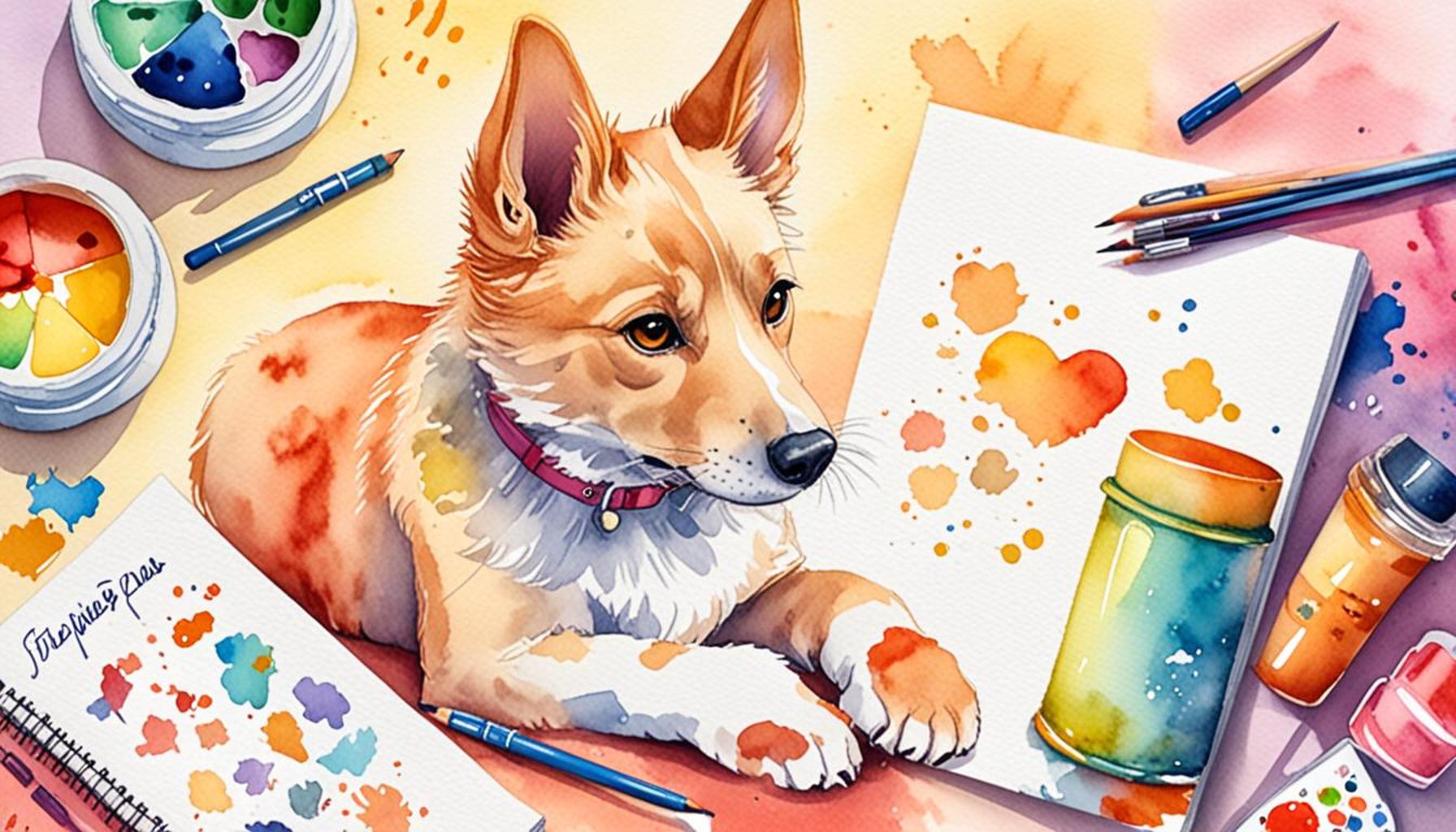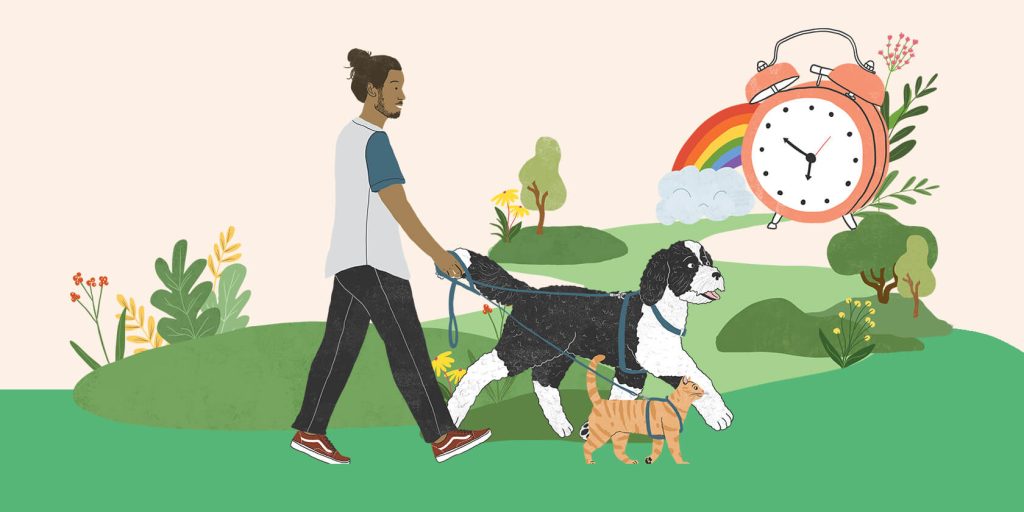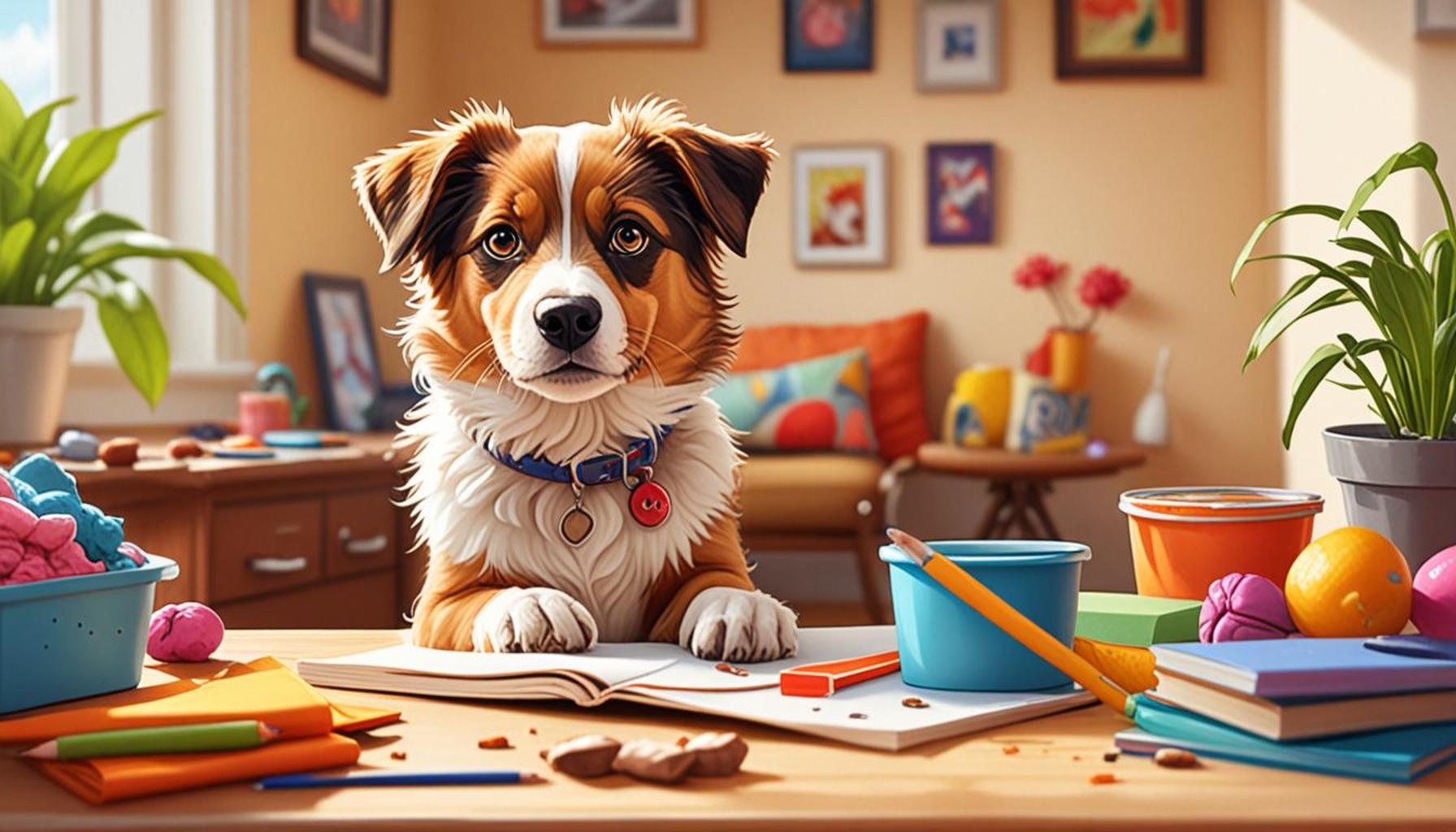The Importance of a Training Plan: How to Teach Your Adopted Pet from the Start

The Importance of a Well-Structured Training Plan for Your New Pet
Bringing a new pet into your home is not just about the joy of companionship; it involves a commitment to nurturing and guiding them as they adjust to their new environment. One of the foundational steps in fostering a healthy, happy relationship with your furry friend is implementing a solid training plan. This plan not only cultivates good habits but also ensures that your pet develops essential social skills that are critical for their well-being.
Why is a Training Plan Essential?
Understanding the importance of a training plan can significantly impact the success of your journey together. Here are several compelling reasons:
- Establishes boundaries: Training helps set clear guidelines for your pet, which is crucial for their understanding of acceptable behaviors. For instance, teaching your dog not to jump on guests can prevent unwanted scenarios and ensure everyone feels comfortable in your home.
- Enhances safety: Training techniques can help avert hazardous situations for both your pet and others. Teaching your dog basic commands, such as “leave it” or “drop it,” can keep them away from harmful objects or situations, making your environment safer.
- Strengthens bonds: Engaging in training sessions provides opportunities for bonding. As you work together to master commands or tricks, you build trust and a deeper emotional connection, transforming your pet into a devoted family member.
Common Training Focus Areas
A well-designed training plan addresses several essential areas, making the transition smoother for both you and your pet. Key focus points might include:
- Housebreaking success: Establishing a routine and reinforcing good habits through consistent training can lead to effective housebreaking, significantly reducing mishaps indoors.
- Leash manners: Learning to walk politely on a leash is vital for enjoyable outdoor experiences. A good training plan can help prevent pulling and ensure your walks are pleasant.
- Basic commands: Mastering commands like “sit,” “stay,” and “come” not only enhances your pet’s behavior but also serves as a crucial communication tool between you and your pet.
Ultimately, a structured training plan can ease anxiety and confusion for both pet and owner. The training process paves the way for a harmonious household, allowing your furry friend to integrate seamlessly as a well-adjusted family member. By understanding the vital elements of effective pet training, you are empowered to create a positive learning environment right from day one.
For those considering a new addition to the family, remember that a commitment to training is just as important as providing food and shelter. It is the foundation upon which a rich and fulfilling relationship is built, leading to countless moments of love and joy with your new best friend.

DISCOVER MORE: Click here for positive training techniques
Key Components of an Effective Training Plan
When embarking on the journey of training your adopted pet, having a well-defined training plan can be the difference between success and frustration. A thoughtful approach not only makes the learning process smoother but also enhances the relationship you share with your furry companion. Let’s delve into the key components that every training plan should include to foster a positive and enriching experience for both pet and owner.
Setting Clear Goals
Before commencing training, it’s crucial to outline clear, achievable goals tailored to your pet’s needs. Whether you’re focusing on housebreaking, socialization, or specific behavioral issues, writing down these goals helps you maintain focus and track progress. For example, if your ultimate goal is for your dog to excel in obedience, you might set smaller milestones such as learning to “sit” or “stay” within the first week. Consistent goal-setting motivates both you and your pet, creating a sense of accomplishment.
Positive Reinforcement Techniques
One of the most effective methods of training is through positive reinforcement. Reward-based training has been supported by various studies, showing that positive reinforcement leads to happier pets and more successful learning outcomes. Employ treats, praise, or playtime as rewards for good behavior. This approach not only encourages desired behaviors but also strengthens your bond. For instance, every time your dog sits on command, offer a treat or a cheerful pat — this reinforces the action and motivates them to repeat it. Consider integrating a clicker to mark desired behaviors instantaneously; pets quickly learn to associate the sound with receiving a reward.
Establishing a Consistent Routine
Animals, much like humans, thrive on routine. By establishing a consistent training schedule, your pet will come to understand what to expect and when, which contributes to a sense of security and predictability. Short, frequent training sessions—around 5 to 10 minutes—are ideal for maintaining focus and enthusiasm. Incorporating sessions into daily activities—for instance, practicing commands during walks or playtime—integrates training into your pet’s daily routine, making the learning process fluid and engaging.
Utilizing Professional Resources
While DIY training can be effective, navigating specific behavioral challenges may require expert guidance. Exploring professional resources, such as dog trainers, animal behaviorists, or reputable training programs, offers insights that can greatly enhance your training plan. Additionally, many communities have classes specifically designed for newly adopted pets, providing a supportive environment for both pets and owners to learn together. Joining a local training class or even online workshops can ensure you are implementing the most effective techniques suited to your pet’s unique temperament and background.
In conclusion, laying down a robust training framework is vital for anyone looking to instill discipline and nurture a well-behaved pet. By understanding the fundamental components that make up a successful training plan, you are setting yourself and your adopted pet on the path to a fulfilling and fun relationship. This journey is not just about correcting behaviors; it’s about enhancing each moment you share together and ensuring that your home becomes a welcoming sanctuary for your new best friend.
The Importance of a Training Plan: How to Teach Your Adopted Pet from the Start
When bringing an adopted pet into your home, having a solid training plan can significantly shape their behavior and your relationship. Proper training not only aids in developing a harmonious household but also ensures that your adopted pet adjusts to their new environment swiftly. A well-structured training plan provides clarity and consistency for both you and your pet. For instance, setting a daily routine that incorporates basic commands like “sit,” “stay,” and “come” can help reinforce desired behaviors. This consistency helps your pet understand what is expected, reducing anxiety and enhancing their confidence. Additionally, implementing positive reinforcement techniques, such as treats or praise, encourages your pet to repeat good behaviors, making the training experience enjoyable.Moreover, socialization is a critical aspect of your training plan. Introducing your adopted pet to different environments, people, and other animals can enhance their adaptability. This exposure minimizes fear-based reactions and promotes positive interactions, allowing them to thrive. Engaging your pet in various activities, from obedience classes to playdates, builds their social skills and confidence.Physical exercise also forms an essential part of your pet’s training regimen. Regular play and exercise not only contribute to their physical health but can also alleviate behavioral issues linked to pent-up energy. Establishing a routine that combines training with physical activity can result in a calmer, more focused pet.Ultimately, the benefits of a comprehensive training plan extend beyond immediate behavior corrections. A well-trained pet is more likely to be integrated into family activities and has a lower risk of developing issues like separation anxiety or aggression. By starting early with a structured plan, your adopted pet will establish a solid foundation, leading to a harmonious coexistence. Explore the various facets of creating an effective training plan to ensure your adopted pet’s successful integration into your home. Start your journey today by developing a strategy that works for both you and your beloved furry friend.
| Category 1 | Category 2 |
|---|---|
| Training Basics | Establish routines, commands, and reinforcement techniques. |
| Socialization | Expose your pet to diverse environments and experiences to enhance adaptability. |
| Physical Exercise | Combine training with physical activity to reduce behavioral issues. |
By prioritizing training, you create a path for a joyful and enriching life for both you and your adopted pet!
DIVE DEEPER: Click here to learn more
Tailoring Your Training Approach
Successfully training your adopted pet requires more than just a generic plan; it involves tailoring your approach to fit the unique personality and past experiences of your companion. Every adopted pet comes with its own history and temperament, which must be taken into consideration to optimize learning and foster trust. Here’s how to customize your training strategy effectively.
Understanding Your Pet’s Background
When adopting, it’s essential to gather any available information regarding your pet’s background. Past traumas, previous training, and socialization experiences can greatly influence behavior. For instance, a dog that has experienced neglect may struggle with trust and require a gentler training approach that avoids overwhelming them. Conducting research on the breed’s general characteristics can also provide insight into common behavioral traits. For example, herding breeds like Border Collies may benefit from mental stimulation activities alongside basic obedience training to keep them engaged.
Incorporating Play and Engagement
Training does not have to be a chore; instead, it can be a fun and stimulating experience! Incorporate elements of play into your training regimen to keep your pet engaged and motivated. Utilizing toys, games, or even puzzles can break up the monotony of traditional training sessions. For example, teaching your dog to retrieve a toy as part of a reward system reinforces positive behaviors while providing excitement. Engaging with your pet through interactive play not only aids learning but also strengthens the emotional bond between you.
The Role of Socialization
Socialization is one of the most critical aspects of training, especially for adopted pets who may not have been adequately exposed to various environments, people, and other animals. Gradual exposure to positive experiences helps reduce anxiety and builds confidence. Take your pet on various outings—whether it’s the dog park, pet-friendly stores, or local events—to introduce them to new sights and sounds. Remember to reward calm behavior with treats or praise to reinforce positive associations. It’s worth noting that socialization should be guided and controlled to avoid overwhelming your pet.
Tracking Progress and Adjusting Techniques
As you implement your training plan, tracking your progress is crucial. Keeping a journal or digital log of behaviors, successes, and challenges allows you to identify patterns and specific areas that may require more focus. If certain techniques do not yield the desired results, be prepared to adjust your methods accordingly. Every pet is unique and may respond differently to various training styles, so flexibility is vital. Consider varying your rewards, altering your tone of voice, or experimenting with different commands to find what resonates best with your furry friend.
Involving the Whole Family
Training is not solely the responsibility of one person; it’s a family affair. Involve everyone who interacts with your pet in the training process to create consistency in commands and routines. This unified approach minimizes confusion and aids in the learning process. Each family member can take turns leading training sessions, ensuring that your pet learns to respond to multiple voices and cues. Having everyone on board also fosters a supportive environment that enriches your pet’s social experiences.
In summary, customizing your training plan is an ongoing journey that requires attentiveness to your pet’s individual needs and circumstances. By understanding your adopted pet’s background, incorporating play, emphasizing socialization, tracking progress, and involving your family, you create a nurturing and effective framework for training that lays the groundwork for a successful and fulfilling relationship. This thoughtful approach ensures that training becomes an integral part of your shared life together, one positive experience at a time.
EXPLORE MORE: Click here for essential emotional tips
Conclusion: Building a Strong Foundation Through Training
In conclusion, a comprehensive training plan is not merely a protocol; it is the key to a harmonious relationship with your adopted pet. Understanding that every animal comes with their own set of experiences allows you to approach training with empathy and adaptability. By customizing your techniques based on your pet’s background, incorporating play for engagement, and prioritizing socialization, you lay down the groundwork for successful bonding. This is especially vital in the formative stages of adopting a pet, where trust and security are established.
Moreover, tracking your progress and adjusting your methods promotes a dynamic learning experience that benefits both you and your furry friend. Remember, training is not a solitary endeavor; it’s a holistic family approach that reinforces consistency and clarity, crucial components for effective learning.
By embarking on this journey to teach your adopted pet from the start, you not only enhance their skills and behavior but also cultivate a lasting bond filled with companionship and joy. Your commitment to their training is a gift that enriches their life and yours. For those who seek further insights, numerous resources such as training classes, books, and online forums can provide additional strategies that align with your pet’s unique needs. Embrace this significant responsibility with patience and enthusiasm, and you’ll undoubtedly witness the rewarding transformation of your adopted pet into a beloved family member.



